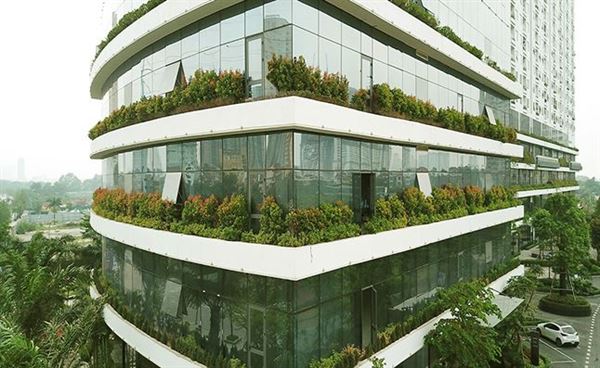At the Workshop on Developing the green high-rise housing market in Vietnam, experts all agreed that climate change, air pollution are becoming a problem in big cities like Hanoi and Ho Chi Minh City. High-rise buildings are considered one of the reasons causing this situation, with a large amount of emissions, dust emitted from construction activities. In addition, high-rise buildings often consume a lot of energy, discharge carbon emissions into the environment, making the Earth's surface heat up.
However, green, environmentally-friendly buildings are very rare in Vietnam. CBRE's report showed that as of December 2018, the country had only 104 certified green projects, with nearly 2.5 million sqm of floor space. Those are very modest figures compared to the thousands of projects built across the country.

Hoang Manh Nguyen, Executive Director of the Green Urban Development and Research Institute, said that compact urban structure (developing high-rise buildings) is a practical solution in big cities with the limited land supply. However, the construction of high-rise buildings in big cities has not been properly cared, threatening the environment. Currently, most housing projects are pursuing profitability without thinking of sustainability criteria. Meanwhile, the deteriorating living environment requires the development of green buildings to become an inevitable trend of the future.
According to IFC’s representative, green buildings have not developed strongly in Vietnam due to the absence of specific investment incentive policies. Another major barrier comes from many developers’ perception that green buildings are expensive, the cost of development will be higher than that of conventional buildings. However, in fact, if the project is oriented "green" right from the beginning and deployed synchronously at all the stages, the cost increase only ranges from 1-2%.
In recent years, green buildings, ecological projects have appeared frequently in the mass media. However, in most projects, the "green, ecological" factor is just a label that is used as a tool for marketing the projects. This communication and marketing processes make many people mistakenly believe that green buildings consist merely of trees and water surfaces. In fact, trees or water surfaces are only small parts of a green building. A real green project consists of not only natural elements but also the process of designing, building, using equipment, materials, operating that project, etc.
Recognizing this fact, Hoang Manh Nguyen said many projects labeled "green" do not follow any green standard and the green label is to serve sales activities as the main purpose. Without a clear standard, it is difficult for home buyers to assess the green level of a project.
For a strong growth of green development, clear policies and laws are needed, Nguyen suggested. In addition, policy makers should create a management system with clear standards to encourage developers to develop green buildings.

















